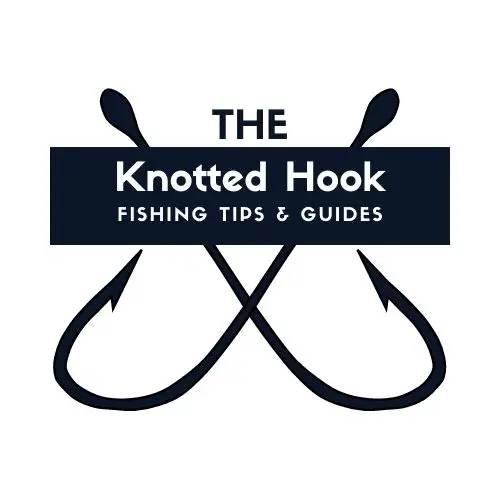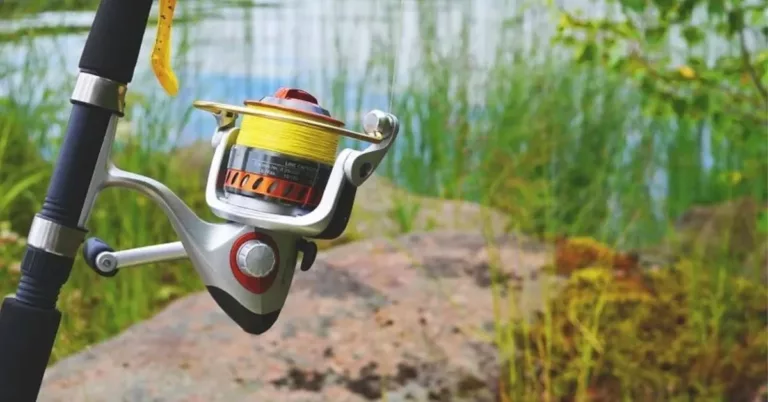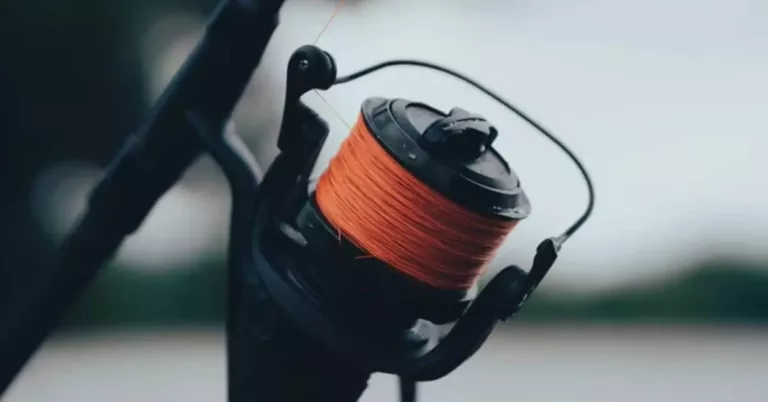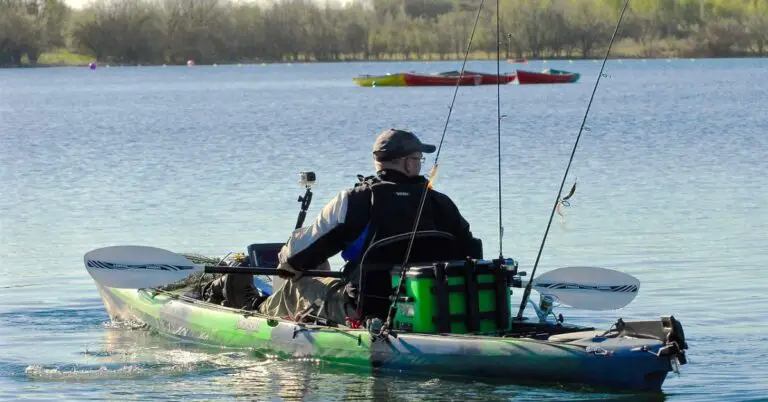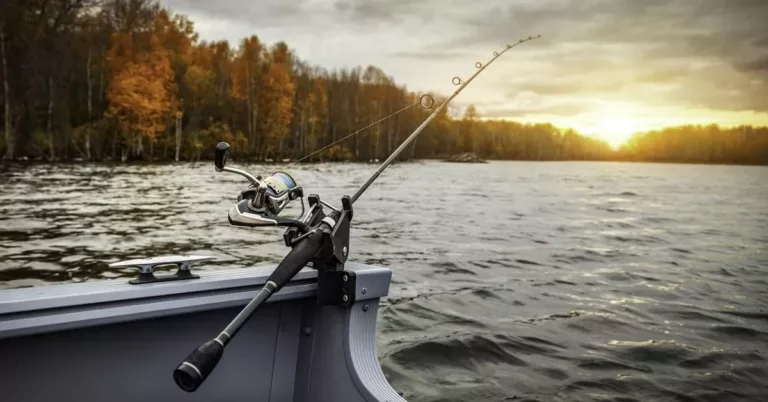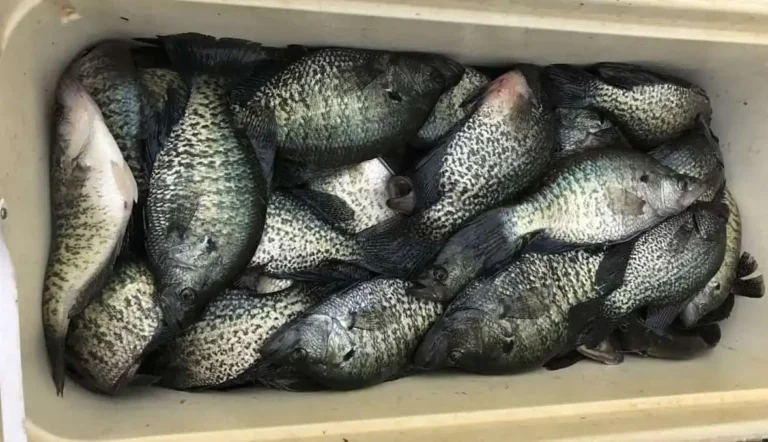Swivels and Crappie Fishing, One Simple Guide

We have all been there, standing in the tackle section of our favorite store and looking at all of the options. Do you need this? Do you need that? It’s hard to know what you need among all of the options. So let’s avoid the confusion and dive into the deep details of swivels.
Cheat Answer for Crappie use a Nickel Plated size 14 or 16 Barrel Swivel.
Read on for why I recommend this size and type.
Introduction
Crappie fishing is a favorite pastime for many anglers. These tasty fish can be found in both fresh and saltwater, and in nearly every state. They can be caught using a variety of techniques and equipment.
No matter which style of crappie fishing you choose, jig, minnow, spider rigging, or just an old-fashioned bobber one essential piece of tackle for crappie fishing is the swivel.
If you are not familiar, a swivel is a small device that connects two lines or components of a fishing rig. Its primary function is to prevent the lines from twisting and tangling.
Tangled lines can reduce the efficiency of the rig and make it difficult to reel in the fish, which in turn could result in lost fish.
When fishing crappie, swivels are particularly useful when using jigs or live baits, such as minnows.
To recap, swivels are vital for several reasons some of these include:
- Swivels can help avoid line twisting
- Swivels may save portions of tackle when you get a snag
- With a swivel, you can quickly change out jigs or lures
Again the primary reason to use a swivel though is to avoid a twisted line, unwanted twists in your line could result in a broken line when you snag that trophy-sized fish.
Options When it Comes to Swivels for Crappie Fishing
A swivel is important, but which 1 should you pick? There are several dozen here on the shelf.
With so many sizes and styles of swivels on the market, it can be difficult to know which one is the best choice for crappie fishing.
The Type of Swivel To Rule Them All
While there are several types of swivels when crappie fishing you usually only need to concern yourself with one type, the barrel swivel.
A barrel swivel is one of the simplest types and requires that you tie it to the end of your fishing line. You then connect another short piece of line to the other end of the swivel and finally your hook to the end of that line. This will allow your hook to swivel as the bait swims around, or as a fish fights on the other end as you reel it in.
If you want to know more about the other types of swivels, check out my article Beginners Guide to Swivels.
Swivel Size, Bigger isn’t Always Better
Moving on, what size swivel should you use for crappie fishing? The answer depends on a few factors, including the size of the crappie, the type of rig you’re using, and the conditions of the water.
But ignoring all of that, let’s think about crappie as a species. The largest recorded crappie ever caught was 5 lbs 7 ounces. With that in mind, you aren’t dealing with huge fish. A super strong swivel isn’t needed for these fish.
Moving on to the next point, crappies are sight hunters, so the larger the swivel you use the more likely you 1 scare the crappie, or 2 cause him to strike at your swivel instead of the hook/bait.
For the majority of crappie fishing situations, a size 16 swivel is a good starting point. If you feel it is too small, you can also use a size 14.
These sizes are small enough to be unobtrusive to the fish, but large enough to handle the weight of large minnows and a crappie strike.
While these sizes may seem small, with a size 16 being just over ¼ inch long, they can easily support up to 20lb test line.
Make sure to check out our article on choosing a braided fishing line for crappie.
Swivel Color, Darker is Better
Swivels come in multiple colors, such as gold, silver, black, and bronze, depending on the material they are made from.
These materials not only affect the performance and strength of the swivel, but also the cost. We cover the details of those materials in our more in-depth Guide to all things Swivel.
However, the material isn’t that important here, as we already discussed, there is relatively low stress on the swivels for fish this size.
Since the material isn’t an issue, we can focus on appearance. As I mentioned before, crappie hunt primarily by sight, using a brighter-colored swivel, which may scare them away or entice a strike on the swivel itself.
With that in mind, I usually opt for a dull bronze or even black colored swivel as opposed to shiny brass or stainless steel options.
Hopefully, you understand a bit more about choosing a swivel for your crappie fishing needs. Now let’s discuss a basic jigging rig and the use of a swivel.
Setting up a Swivel on a Simple Jig
A swivel makes a huge difference when fishing a jig, this is due largely to the fact that you are repeatedly dropping the jig into the water which causes it to spin as it sinks down to the desired level.
Adding a swivel to the jig prevents the line from also twisting up, and aids the jig in coming to rest once it reaches the desired depth.
Start by deciding on the style of float you are going to use, clip on floats can be added later, but if it’s a slip float then thread the line from your reel through the float and insert the peg once the float is about 10 inches up from the end.
Taking the end of the line from your fishing reel, attach it to one end of the swivel. This can be done using any of a number of knots, but I recommend a clinch or double clinch knot.
Once that is done, take a short piece of line around 12 to 20 inches long and attach that to the other end of the swivel using an appropriate knot.
Now you can secure your jig to the end of that piece of line. One trick here is to use a braided line for your main fishing line and then switch to monofilament or fluorocarbon for the short line or “leader” line as it’s often called.
Tying a Swivel – Video
Conclusion
Hopefully, I have helped to alleviate some of the mystery behind swivels and you know right what to grab when selecting gear for your next crappie fishing trip.
Remember a swivel has quite a few benefits and is a relatively inexpensive addition to your tackle, choose a darker-colored size 16 or 18 barrel swivel and you will be good to go.
Hopefully your next trip out yields a few big ones, till next time.
